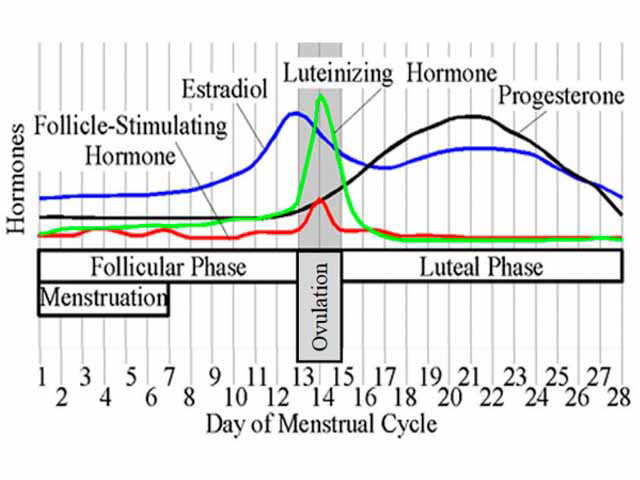Main menu
Common skin conditions

NEWS
Join DermNet PRO
Read more
Quick links
Oestrogen hypersensitivity vulvitis — extra information
Oestrogen hypersensitivity vulvitis
Authors: Dr Yi Jia Lee, Resident Medical Officer, King Edward Memorial Hospital, Perth Australia; Dr Varitsara Mangkorntongsakul, Dermatology Research Fellow, The University of Sydney, Australia; Dr Bernadette McElhinney, Consultant Obstetrician Gynaecologist, Perth, Australia. Copy edited by Gus Mitchell. September 2021
Introducion
Demographics
Causes
Clinical features
Complications
Diagnosis
Differential diagnoses
Treatment
Outcome
What is oestrogen hypersensitivity vulvitis?
Oestrogen hypersensitivity vulvitis is a rarely reported form of chronic cyclic vulvovaginitis due to endogenous or exogenous oestrogen allergy.
Who gets oestrogen hypersensitivity vulvitis?
Oestrogen hypersensitivity vulvitis has been reported in a very small number of mostly premenopausal women (age range 11–48 years) with a mean age of onset of symptoms of 26 years. Most (but not all) have been previously exposed to exogenous hormones such as the oral contraceptive pill. The majority have never been pregnant at the time of diagnosis.
Post-menopausal women on hormone replacement therapy (age range 47–63 years) have been rarely described, with constant symptoms rather than a cyclic pattern.
Sex hormone levels over the menstrual cycle

Image from: Wikimedia
What causes oestrogen hypersensitivity vulvitis?
Oestrogen hypersensitivity vulvitis is localised to the vulva perhaps due to the sensitivity of genital oestrogen receptors.
Oestrogen hypersensitivity sensitivity vulvitis is probably a dose-dependent type IV reaction [see Allergies explained].
What are the clinical features of oestrogen hypersensitivity vulvitis?
- Premenstrual symptoms — either:
- Chronic symptoms with a premenstrual flare, or
- Premenstrual symptoms only
- Vulval itch, burning, dyspareunia
- Non-specific erythema of the labia minora and introitus
- Failure to respond to antifungal agents and topical steroids
What are the complications of oestrogen hypersensitivity vulvitis?
- Psychosocial impact, particularly due to dyspareunia
- Exacerbation of symptoms with pregnancy
- Extragenital skin changes of oestrogen dermatitis
How is oestrogen hypersensitivity vulvitis diagnosed?
Oestrogen hypersensitivity vulvovaginitis is a clinical diagnosis based on the cyclic pattern of symptoms and failure to respond to standard treatments for vulval itch.
- Vulvovaginal swabs — should be taken as often positive for Candida albicans or Group B streptococci
- Skin biopsy shows a spongiotic dermatitis, and may be performed to exclude other vulval dermatoses
- Intradermal testing with oestrogen, oestrogen metabolites, and progesterone; normal saline and histamine controls; delayed reactions have been reported. Testing is not currently feasible in the clinic setting as the reagents are not available commercially.
What is the differential diagnosis for oestrogen hypersensitivity vulvitis?
- Chronic vulvovaginal candidiasis and other causes of cyclic vulvovaginitis
- Autoimmune progesterone dermatitis — does not typically involve the vulva
- Other vulval dermatosis [see Itchy vulva]
What is the treatment for oestrogen hypersensitivity vulvitis?
- Treatment is not required or requested by all patients
- Treatment of C. albicans if swab is positive
- Cessation of exogenous oestrogens
- Cyproterone acetate taken daily with a reducing dose titrated once symptoms have been controlled
- Oestrogen antagonists have been used for oestrogen dermatitis
What is the outcome for oestrogen hypersensitivity vulvitis?
Oestrogen hypersensitivity vulvitis resolves at menopause.
Bibliography
- Fischer G, Ayer B, Frankum B, Spurrett B. Vulvitis attributed to hypersensitivity to estrogen. A report of 11 cases. J Reprod Med. 2000;45(6):493–7. PubMed
- Itsekson A, Lazarov A, Cordoba M, Zeitune M, Abraham D, Seidman DS. Premenstrual syndrome and associated skin diseases related to hypersensitivity to female sex hormones. J Reprod Med. 2004;49(3):195–9. PubMed
- Lavery WJ, Bernstein JA. Cyclical hypersensitivity, anaphylaxis, and related hormonal reaction. Ann Allergy Asthma Immunol. 2019;122(2):140–7. doi:10.1016/j.anai.2018.11.016. PubMed
- Nguyen Y, Bradford J, Fischer G. Cyproterone acetate in the treatment of oestrogen hypersensitivity vulvovaginitis. Australas J Dermatol. 2018;59(1):52–4. doi:10.1111/ajd.12657. PubMed
- Untersmayr E, Jensen AN, Walch K. Sex hormone allergy: clinical aspects, causes and therapeutic strategies - update and secondary publication. World Allergy Organ J. 2017;10(1):45. doi:10.1186/s40413-017-0176-x. PubMed Central
